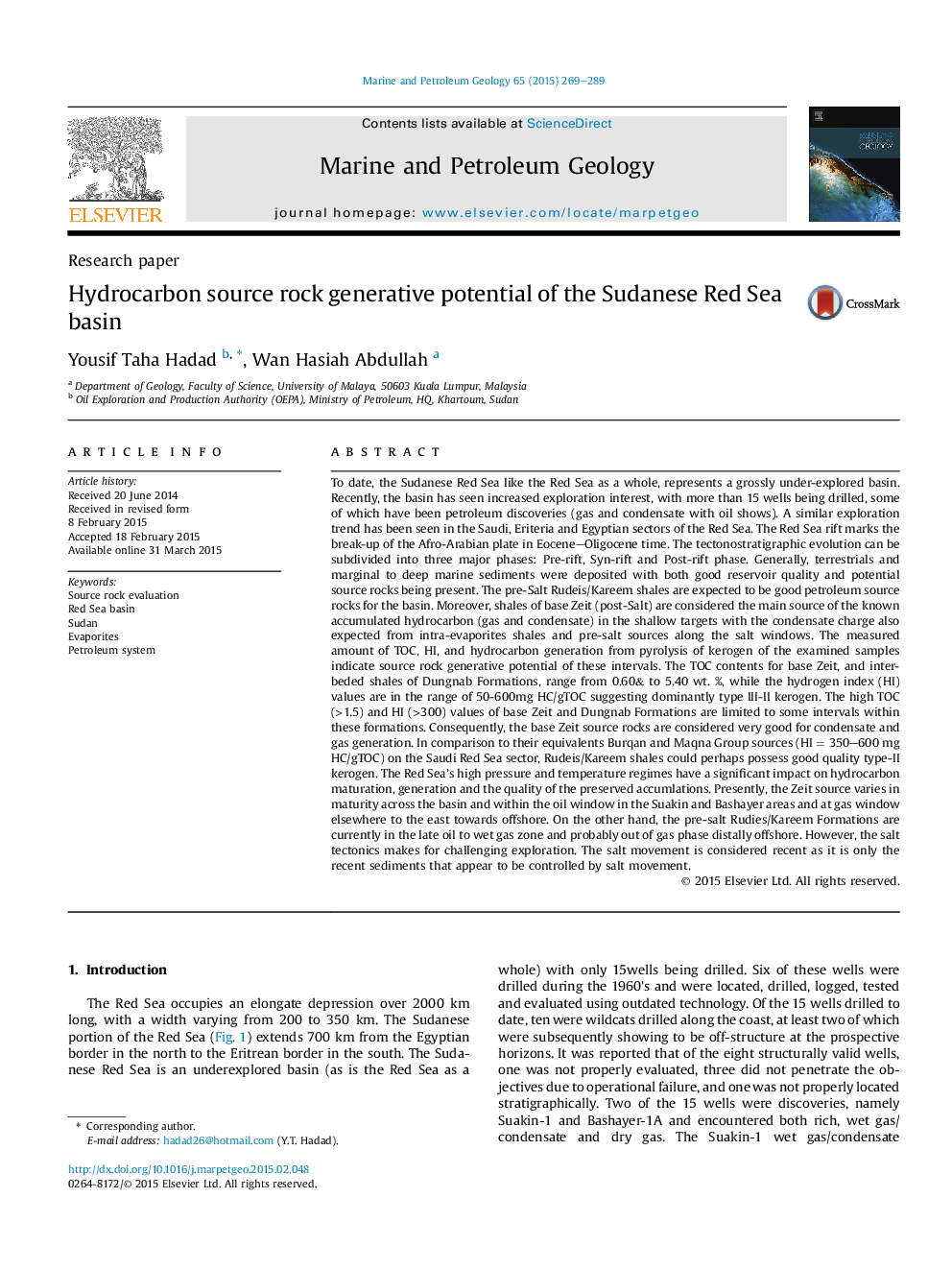| کد مقاله | کد نشریه | سال انتشار | مقاله انگلیسی | نسخه تمام متن |
|---|---|---|---|---|
| 6435058 | 1637160 | 2015 | 21 صفحه PDF | دانلود رایگان |
- Rudeis/Kareem shales/marls are good quality mature type-II marine oil source rocks.
- Shales of base Zeit Formation are the main source of the accumulated gas/condensate.
- Tested good Saudi/Eritrea/Ethiopia/Yemen SR establish the same for Sudan Red Sea.
- Recent oil discovered on the Saudi Red Sea confirm the presence of oil on Sudan sea.
- Salt tectonic makes for challenging exploration and provide seal to underlying HC.
To date, the Sudanese Red Sea like the Red Sea as a whole, represents a grossly under-explored basin. Recently, the basin has seen increased exploration interest, with more than 15 wells being drilled, some of which have been petroleum discoveries (gas and condensate with oil shows). A similar exploration trend has been seen in the Saudi, Eriteria and Egyptian sectors of the Red Sea. The Red Sea rift marks the break-up of the Afro-Arabian plate in Eocene-Oligocene time. The tectonostratigraphic evolution can be subdivided into three major phases: Pre-rift, Syn-rift and Post-rift phase. Generally, terrestrials and marginal to deep marine sediments were deposited with both good reservoir quality and potential source rocks being present. The pre-Salt Rudeis/Kareem shales are expected to be good petroleum source rocks for the basin. Moreover, shales of base Zeit (post-Salt) are considered the main source of the known accumulated hydrocarbon (gas and condensate) in the shallow targets with the condensate charge also expected from intra-evaporites shales and pre-salt sources along the salt windows. The measured amount of TOC, HI, and hydrocarbon generation from pyrolysis of kerogen of the examined samples indicate source rock generative potential of these intervals. The TOC contents for base Zeit, and interbeded shales of Dungnab Formations, range from 0.60& to 5.40Â wt. %, while the hydrogen index (HI) values are in the range of 50-600mg HC/gTOC suggesting dominantly type III-II kerogen. The high TOC (>1.5) and HI (>300) values of base Zeit and Dungnab Formations are limited to some intervals within these formations. Consequently, the base Zeit source rocks are considered very good for condensate and gas generation. In comparison to their equivalents Burqan and Maqna Group sources (HIÂ =Â 350-600 mg HC/gTOC) on the Saudi Red Sea sector, Rudeis/Kareem shales could perhaps possess good quality type-II kerogen. The Red Sea's high pressure and temperature regimes have a significant impact on hydrocarbon maturation, generation and the quality of the preserved accumlations. Presently, the Zeit source varies in maturity across the basin and within the oil window in the Suakin and Bashayer areas and at gas window elsewhere to the east towards offshore. On the other hand, the pre-salt Rudies/Kareem Formations are currently in the late oil to wet gas zone and probably out of gas phase distally offshore. However, the salt tectonics makes for challenging exploration. The salt movement is considered recent as it is only the recent sediments that appear to be controlled by salt movement.
Journal: Marine and Petroleum Geology - Volume 65, August 2015, Pages 269-289
